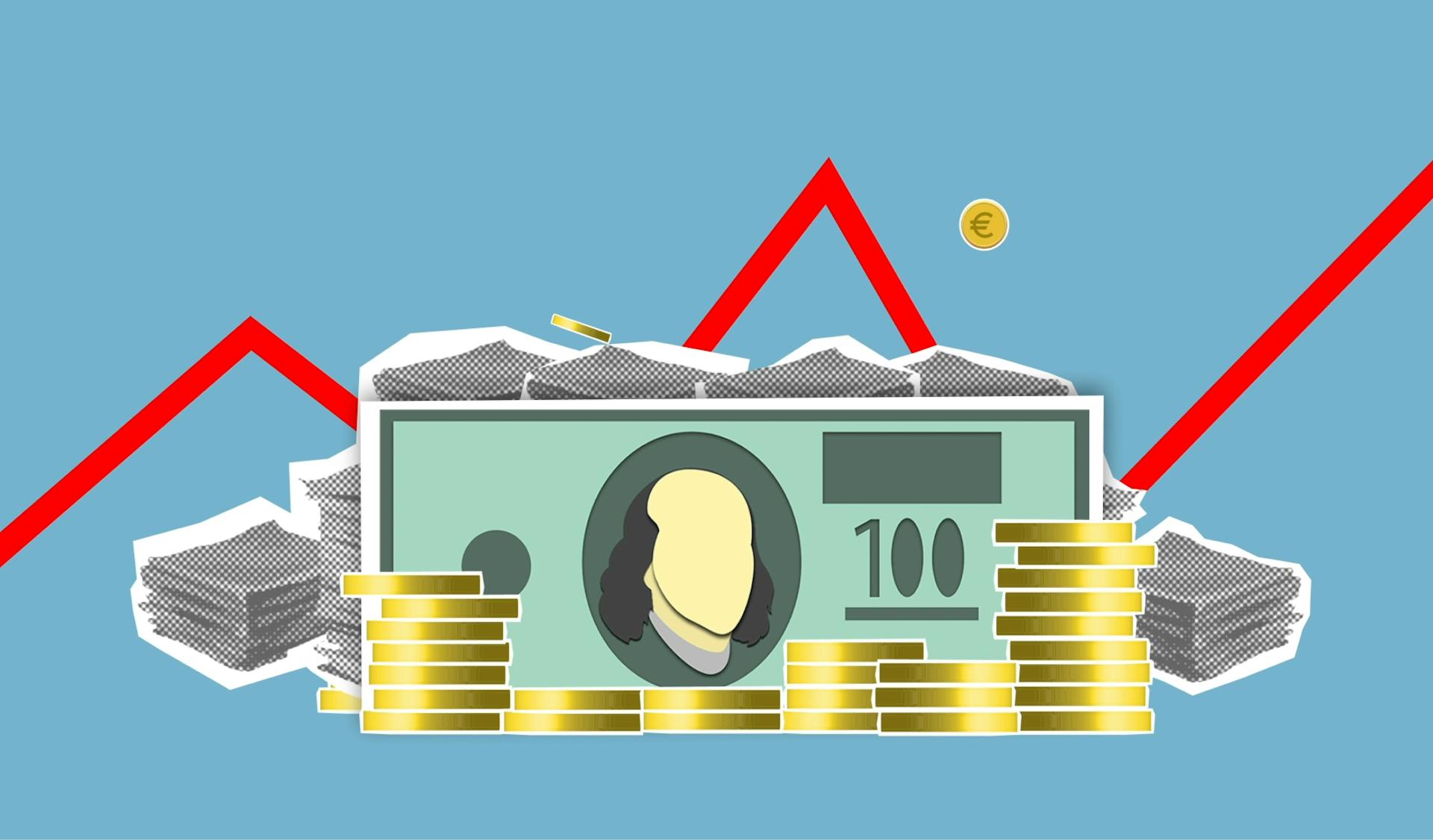
Understanding Capital Gains and Estate Taxes can be overwhelming, but it's essential to grasp the basics. The IRS considers capital gains and estate taxes as two separate entities, but they often intersect.
You'll need to know the tax rate brackets for long-term capital gains, which are 0%, 15%, and 20%. The rates depend on your income level and filing status.
When selling an asset, you'll need to determine if it's a capital gain or a loss. A capital gain occurs when you sell an asset for more than its original purchase price, while a loss occurs when you sell it for less.
The IRS requires you to report capital gains and losses on your tax return, typically on Form 1040. You'll need to calculate the gain or loss and report it accordingly.
Consider reading: What Is a Capital Asset for Tax Purposes
Understanding Capital Gains
You can realize capital gains on the sale of stock shares or other taxable investment assets. The tax doesn't apply to unsold investments or unrealized capital gains.
Capital gains tax rates vary depending on how long you've held the asset. If you hold it for more than a year, you'll pay a lower rate, typically 0%, 15%, or 20%, depending on your tax bracket.
Most people pay a higher rate on their income than on long-term capital gains. This gives them a financial incentive to hold investments for at least a year.
Investors who own assets for less than a year will owe short-term capital gains tax, which is determined by their ordinary income bracket. For most people, this is a higher tax rate than the capital gains rate.
A capital gain occurs when you sell an asset for more than you paid for it. This can happen with items like artwork, vintage cars, or jewelry.
Property like real estate and collectibles, including art and antiques, have special capital gains rules with sometimes higher tax rates.
If this caught your attention, see: Do Capital Gains Taxes Change My Income Tax Rate
Calculating Your
Calculating Your Capital Gains is a crucial step in determining your tax obligation. You'll need to report most sales and other capital transactions on Form 8949, Sales and Other Dispositions of Capital Assets.
Check this out: What Is Sales Tax
To calculate your capital gains, you'll need to sort your short-term and long-term gains and losses separately. This is because short-term gains are netted against short-term losses, and long-term gains are netted against long-term losses.
You can use a capital gains calculator to get a rough idea of what you may pay on a potential or actualized sale. However, keep in mind that most individuals calculate their tax obligation using software that automatically makes the computations.
First, you'll need to calculate your net short-term gain or loss by subtracting your short-term losses from your short-term gains. Then, you'll do the same with your long-term gains and losses.
For another approach, see: How Long to Hold Stock for Long Term Capital Gains
Tax Rates and Brackets
Tax rates and brackets play a crucial role in determining how much you'll pay in capital gains taxes.
For taxable years beginning in 2023, the tax rate on most net capital gain is no higher than 15% for most individuals. However, a capital gains rate of 0% applies if your taxable income is less than or equal to $44,625 for single and married filing separately, $89,250 for married filing jointly and qualifying surviving spouse, and $59,750 for head of household.
Suggestion: Taxable Benefit vs Capital Gains Stock Options
A capital gains rate of 15% applies if your taxable income is more than $44,625 but less than or equal to $492,300 for single, more than $44,625 but less than or equal to $276,900 for married filing separately, more than $89,250 but less than or equal to $553,850 for married filing jointly and qualifying surviving spouse, and more than $59,750 but less than or equal to $523,050 for head of household.
However, a capital gains rate of 20% applies to the extent that your taxable income exceeds the thresholds set for the 15% capital gain rate. There are also exceptions where capital gains may be taxed at rates greater than 20%, including the taxable part of a gain from selling section 1202 qualified small business stock, which is taxed at a maximum 28% rate.
Here's a breakdown of the tax rates for long-term capital gains in 2024:
Special Cases and Exceptions
Some assets get special treatment when it comes to capital gains tax, and it's essential to know what they are.
Taxable gains from qualified small business stock sales are taxed at a rate of 28%. This is a notable exception to the standard capital gains tax rates.
If you're selling collectibles, such as art, coins, or comics, you'll be taxed at a rate of 28% on the gain. This applies to all collectibles, not just a select few.
Unrecaptured gain under section 1250 for real property is taxed at a rate of 25% in certain cases where depreciation was previously reported. This is a specific rule that applies to real estate investments.
Here's a summary of the special capital gains tax rates for different asset types:
Special Exceptions
Some assets get special treatment when it comes to capital-gains tax.
Assets like primary residences, for example, are usually exempt from capital-gains tax if certain conditions are met.
Primary residences are considered personal homes, not investment properties, and are typically exempt from capital-gains tax.
The primary residence exemption can be a huge relief for homeowners who sell their homes and make a profit.
Assets like art, collectibles, and certain business assets may also get special capital-gains tax treatment.
See what others are reading: Capital Gains Taxes on Primary Residence
Collectibles

Collectibles can be a complex area when it comes to taxes, with short-term gains taxed as ordinary income at graduated tax rates.
If you sell a collectible, such as a piece of art or an antique, within a year of buying it, the gain is considered short-term and is taxed accordingly.
Long-term gains on collectibles, on the other hand, are taxed with a cap of 28% - a significant difference from the graduated tax rates applied to short-term gains.
Readers also liked: How Are Etfs Taxed
Managing and Minimizing Taxes
Holding investments for more than one year can help minimize capital gains taxes, as profits from long-term investments are taxed at a lower rate than short-term gains.
You can also use your capital losses to offset capital gains and reduce your tax liability. If your losses exceed your gains, you can claim up to $3,000 against your income, and carry over any excess loss to future years.
Robo-advisors often employ tax strategies like tax-loss harvesting to help minimize capital gains taxes. This can be especially helpful for those who may not have the time or expertise to manage their investments effectively.
Curious to learn more? Check out: Taxes Capital Gains Losses
If you're selling your main home, you may be able to exempt up to $250,000 in profits from capital gains taxes if you owned and lived in the home for two of the five years leading up to the sale.
To minimize taxes on property sales, consider reinvesting sale proceeds through a 1031 exchange or transferring assets into an opportunity zone.
Here are some key strategies for managing and minimizing taxes:
- Hold investments for more than one year to reduce tax liability
- Use capital losses to offset capital gains
- Consider tax-loss harvesting through a robo-advisor
- Take advantage of tax exemptions for main home sales
- Reinvest sale proceeds through a 1031 exchange or opportunity zone transfer
Retirement and Estate Planning
Holding onto assets for longer periods can help reduce capital gains taxes, as the longer you hold onto an asset, the less you'll have to pay in taxes when you eventually sell it.
You can also reduce capital gains taxes by utilizing tax-advantaged retirement accounts, which are designed to help you save for the future while minimizing taxes.
Strategically timing sales is another key strategy for minimizing capital gains taxes.
Real Estate and Property Sales
You can exclude up to $250,000 in capital gains from your taxable income if you sell your principal residence and have lived in it for two years or more.
The exemption doubles to $500,000 for married couples filing jointly.
You can't deduct capital losses from the sale of personal property like a home from your gains.
If you've made significant repairs or improvements to your home, you can add those costs to its original price, reducing your taxable capital gain.
Investors who own real estate can take depreciation deductions to reflect the property's deterioration over time.
This can increase your taxable capital gain if you sell the property, as the deduction reduces the amount you paid for it in the first place.
The tax rate on recaptured depreciation is 25%.
You'll need to complete a worksheet in the instructions for Schedule D on your tax return to figure your gain and tax rate for this type of asset.
You can deduct any repairs or renovations you made to an investment property to improve its selling price.
Keep documentation of your expenses, such as mortgage statements and credit card statements, in case you're audited.
Expand your knowledge: How Much Are Capital Gains Taxes on Property
If you've made capital improvements to your home, such as a kitchen renovation, you can add those costs to its original purchase price to reduce your taxable capital gain.
For example, if you spent $50,000 on a kitchen renovation, your cost basis would be $200,000, making your profit $0 if you sell the home for $200,000.
Worth a look: Capital Gains Taxes on Primary Residence
Strategies
Holding onto assets for more than a year can significantly reduce capital gains taxes, as the tax rate for long-term gains is generally lower than for short-term gains.
This strategy is a simple yet effective way to minimize tax liability, and it's a good starting point for investors who want to reduce their net capital gains taxes.
By holding onto assets for the long term, investors can avoid paying higher tax rates on short-term gains, which can add up quickly.
In fact, the tax rate for long-term gains is often significantly lower than for short-term gains, making it a wise decision for investors who plan to hold onto their assets for an extended period.
For another approach, see: Stock Long Term Capital Gain
Definitions and Rates
Capital gains taxes are a type of tax on the profits earned from the sale of assets such as stocks, real estate, and businesses. They're calculated by taking the total sale price of an asset and deducting the original cost.
The tax rates for capital gains vary depending on the length of time you've held the asset and your income level. If an asset was held for less than one year and then sold for a profit, it's classified as a short-term capital gain and taxed as ordinary income.
For long-term capital gains, which are gains from assets held for more than one year, the tax rates are generally lower. Most long-term capital gains are taxed at rates of up to 20% based on income.
Here are the tax rates for long-term capital gains for tax year 2024:
Keep in mind that these rates may change over time, so it's always a good idea to consult with a tax professional or check the IRS website for the most up-to-date information.
Definitions and Rates
Capital assets, which include things like stocks, bonds, homes, cars, jewelry, and art, are subject to capital gains taxes.
The purchase price of a capital asset is typically referred to as its basis. When an asset is sold at a price higher than its basis, it results in a capital gain.
You can exclude up to $250,000 of capital gains from the sale of your primary residence, or up to $500,000 if you're married filing jointly.
Here are the tax rates for long-term capital gains in 2024:
Note that these rates apply to long-term capital gains, which are gains from assets held for more than one year.
Small Business Tax Rate: 28 Percent
If you've realized a gain from qualified small business stock that you held for more than five years, you can exclude one-half of your gain from income. The remaining gain may be taxed at up to a 28 percent rate.
The IRS Publication 550 has more information on gains from qualified small business stock. You should check it out for specifics.
The 28 percent rate applies to gains from collectibles, including proceeds from the sale of art, NFTs, antiques, gems, stamps, coins, precious metals, and wine or brandy collections.
Here are some examples of collectibles that are subject to the 28 percent rate:
- A work of art
- NFTs
- Antiques
- Gems
- Stamps
- Coins
- Precious metals
- Wine or brandy collections
Do You Pay State Taxes?
You'll pay state taxes on your capital gains in addition to federal taxes, though there are some exceptions.
Most states simply tax your investment income at the same rate that they already charge for earned income. Some states tax them differently, and a few states have no income tax at all.
Seven states have no income tax – Alaska, Florida, Nevada, South Dakota, Tennessee, Texas, and Wyoming. New Hampshire doesn't tax earned income but does tax investment income.
Washington only taxes capital gains income.
Take a look at this: Investment Loss Carry Forward
Frequently Asked Questions
How much can you inherit from your parents without paying taxes?
In 2024, you can inherit up to $13,610,000 from your parents without paying federal estate tax. However, you may still be responsible for capital gains taxes on inherited assets
Is there capital gains tax on inherited property in a trust?
Capital gains tax on inherited property in a trust may be owed by the trust itself, not the beneficiary, depending on the trust type. A non-grantor trust may be responsible for paying capital gains tax on the sale of inherited property
Featured Images: pexels.com


